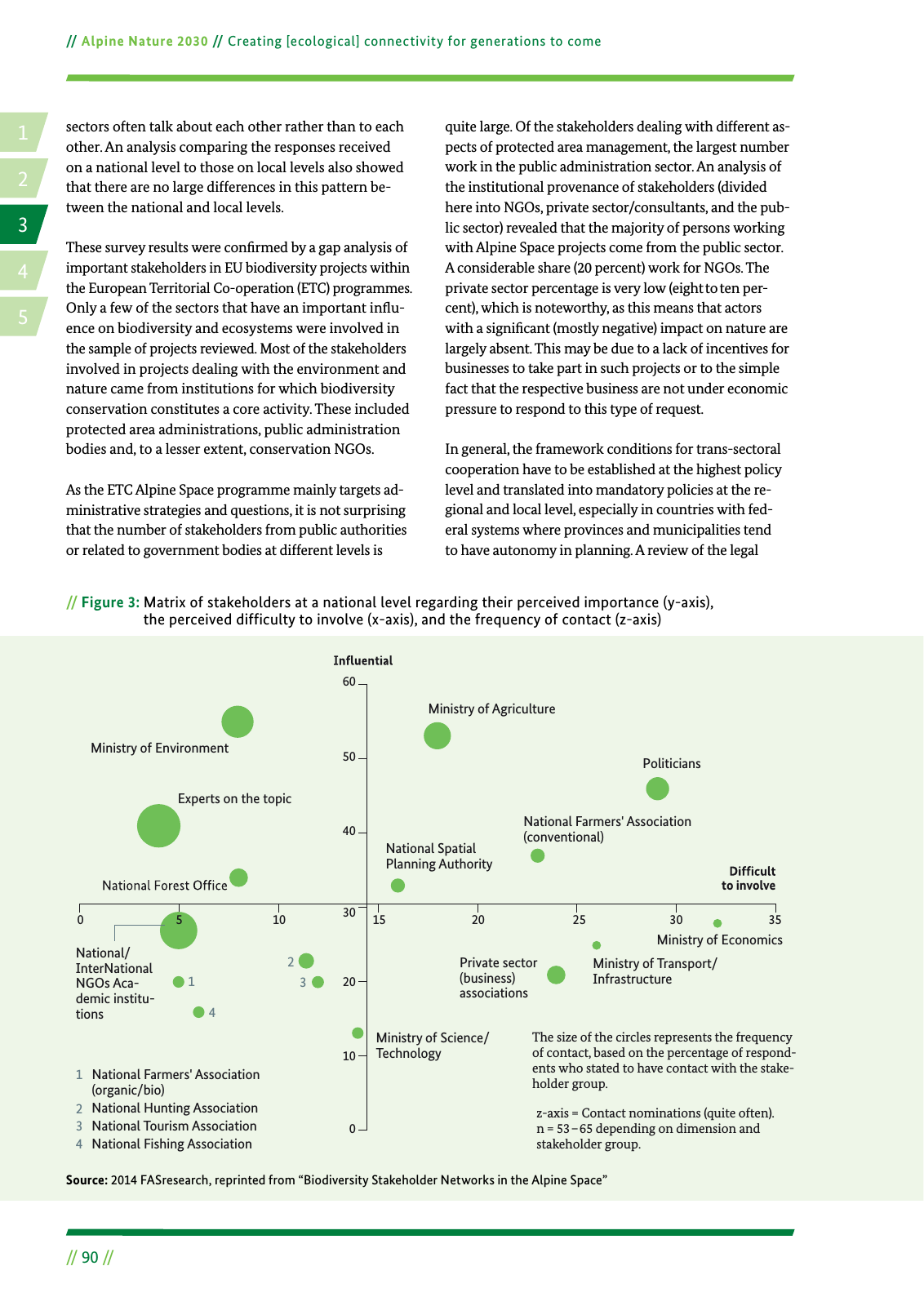14 2 5 3 Alpine Nature 2030 Creating ecological connectivity for generations to come 90 sectors often talk about each other rather than to each other An analysis comparing the responses received on a national level to those on local levels also showed that there are no large differences in this pattern be tween the national and local levels These survey results were con rmed by a gap analysis of important stakeholders in EU biodiversity projects within the European Territorial Co operation ETC programmes Only a few of the sectors that have an important in u ence on biodiversity and ecosystems were involved in the sample of projects reviewed Most of the stakeholders involved in projects dealing with the environment and nature came from institutions for which biodiversity conservation constitutes a core activity These included protected area administrations public administration bodies and to a lesser extent conservation NGOs As the ETC Alpine Space programme mainly targets ad ministrative strategies and questions it is not surprising that the number of stakeholders from public authorities or related to government bodies at different levels is quite large Of the stakeholders dealing with different as pects of protected area management the largest number work in the public administration sector An analysis of the institutional provenance of stakeholders divided here into NGOs private sector consultants and the pub lic sector revealed that the majority of persons working with Alpine Space projects come from the public sector A considerable share 20 percent work for NGOs The private sector percentage is very low eight to ten per cent which is noteworthy as this means that actors with a signi cant mostly negative impact on nature are largely absent This may be due to a lack of incentives for businesses to take part in such projects or to the simple fact that the respective business are not under economic pressure to respond to this type of request In general the framework conditions for trans sectoral cooperation have to be established at the highest policy level and translated into mandatory policies at the re gional and local level especially in countries with fed eral systems where provinces and municipalities tend to have autonomy in planning A review of the legal Source 2014 FASresearch reprinted from Biodiversity Stakeholder Networks in the Alpine Space Figure 3 Matrix of stakeholders at a national level regarding their perceived importance y axis the perceived difficulty to involve x axis and the frequency of contact z axis z axis Contact nominations quite often n 53 65 depending on dimension and stakeholder group Ministry of Environment 60 to involve 50 40 300 5 10 15 20 25 30 35 20 10 0 Experts on the topic Ministry of Agriculture The size of the circles represents the frequency of contact based on the percentage of respond ents who stated to have contact with the stake holder group Ministry of Economics Ministry of Transport Infrastructure Ministry of Science Technology 1 National InterNational NGOs Aca demic institu tions 4 2 National Spatial Planning Authority National Farmers Association organic bio 1 National Fishing Association4 National Hunting Association 2 National Tourism Association3 3 Private sector business associations Politicians National Farmers Association conventional

Hinweis: Dies ist eine maschinenlesbare No-Flash Ansicht.
Klicken Sie hier um zur Online-Version zu gelangen.
Klicken Sie hier um zur Online-Version zu gelangen.